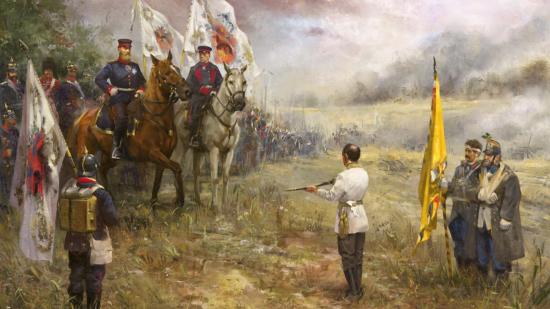Other than a small break during the middle of July, Victoria 3 developer diaries have been continuing every week as the devs reveal more and more of the upcoming grand strategy game’s key features. The past couple of weeks have looked at things like laws and institutions, but this week’s diary tackles something that’s at the heart of the series’ 19th century theme – global markets.
Victoria 2’s economic system is notorious for being overly complex and prone to collapsing should the wrong nation start outproducing everyone else, but Victoria 3’s economic model has been redesigned from the ground up to offer a better solution for a myriad of problems. One of the key changes to Victoria 3’s economic system is the removal of ‘stockpiles’ – the mechanic of storing produced goods for use at a later date – which has some fans worried about the implications on warfare.
Military goods have always held a separate, and sometimes awkward, place in Victoria’s pantheon of modelled products that could be bought and sold on the global market. They are largely a waste during peacetime, and in high demand whenever anyone’s fighting a major war. Stockpiling weapons ahead of time – some argue – is a legitimate and historically authentic tactic that can especially be useful for smaller nations.
In Victoria 3, goods will now be produced and then instantly sold “at a price determined by how many consumers are willing to buy it at the moment of production.”
“Any stockpiling in the system is represented as cash” the diary explains, “or as pop wealth… This more open economic model is both more responsive to sudden economic shifts and less prone to mysterious systemic failures.”
Overall, Victoria 3’s lead designer Mikael Andersson believes that “the complexity, responsive simulation, and interesting gameplay added by [the new system] more than make up for what we lose.”
The dev diary does indicate that stockpiling is present through the current abstractions around wealth, and a further response from Andersson says another reason literal stockpiles have been removed is to prevent inertia within the military system and avoid lessening the economic impact of warfare. How this will influence this area of the game remains to be seen as there’s a lot that isn’t known about war in Victoria 3 right now.

From a personal perspective, the lack of information on the war mechanics make changes like these all the more ominous, purely because we have no idea what the warfare systems will even look like. Game director Martin Anward has been keen from the start to de-emphasise the role of warfare in Victoria 3, and Andersson has also stated that “Everything that you can get from war, you should also be able to get from diplomacy.”
Between the two, those of us who enjoy warfare mechanics – even if it’s Crusader Kings 3’s highly abstracted take on medieval warfare – are left concerned about what the team’s intentions are towards warfare. Victoria 3’s time period – the 19th to early 20th century – was still a period of conflict, with everything from small colonial skirmishes to the First World War. The lead up to WW1 involved a lot of stockpiling by some of the major players in the years leading up to the war.
Related: Victoria 3 release date
While others share similar concerns, overall the consensus seems to be that, so long as the economic model is not like Victoria 2’s, then everything will (probably) be fine.
At the time of writing, there is no release window for Victoria 3.
